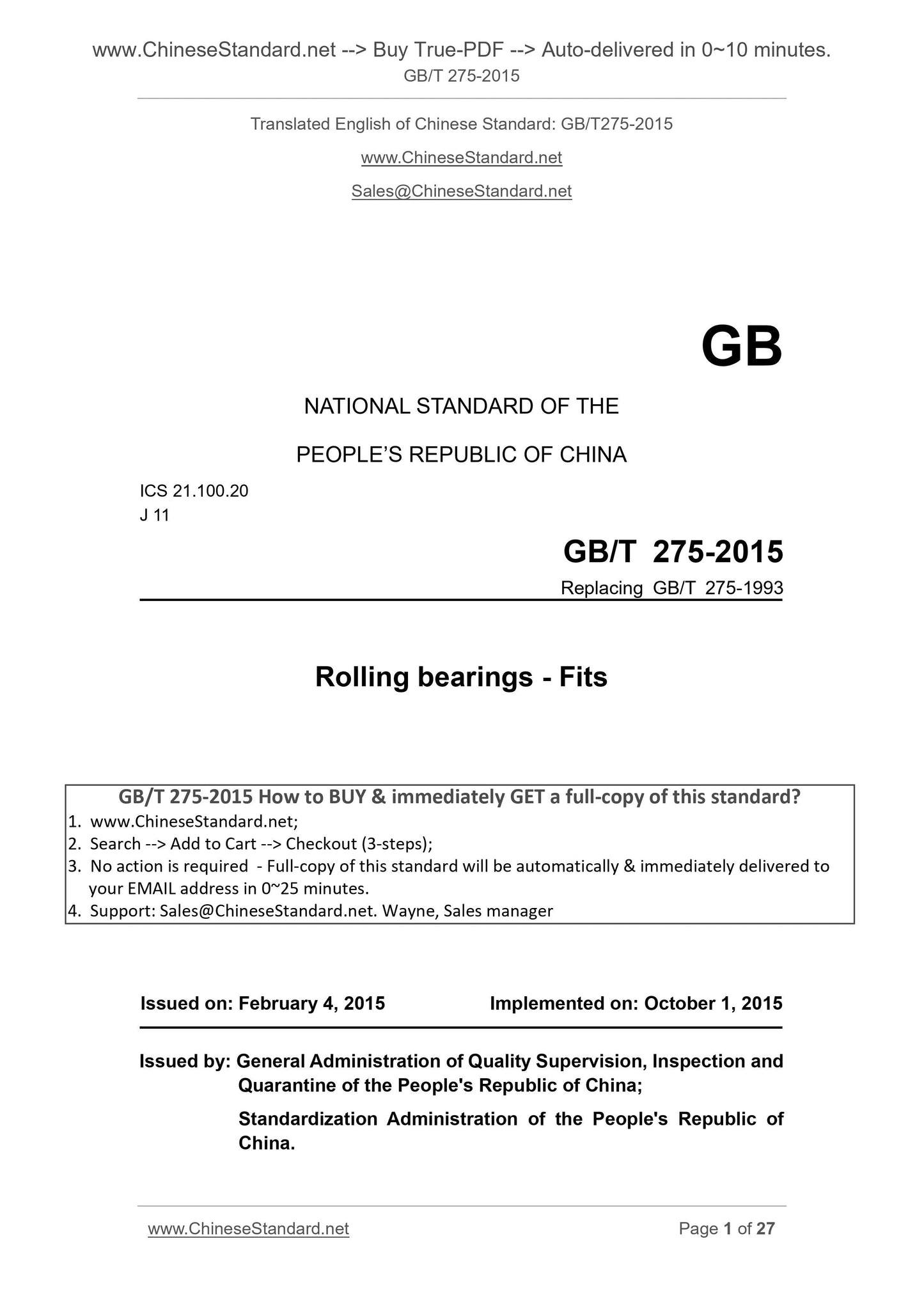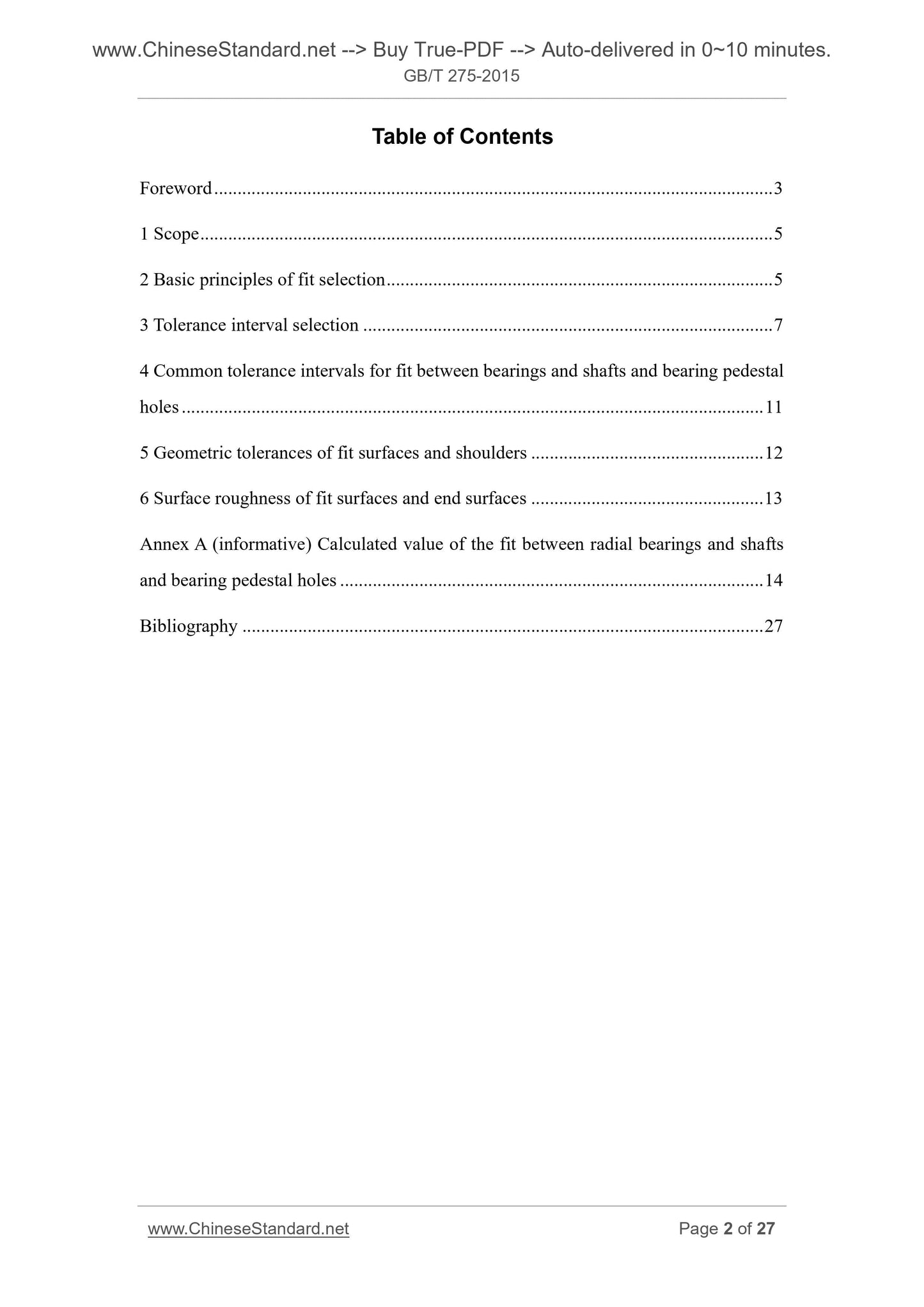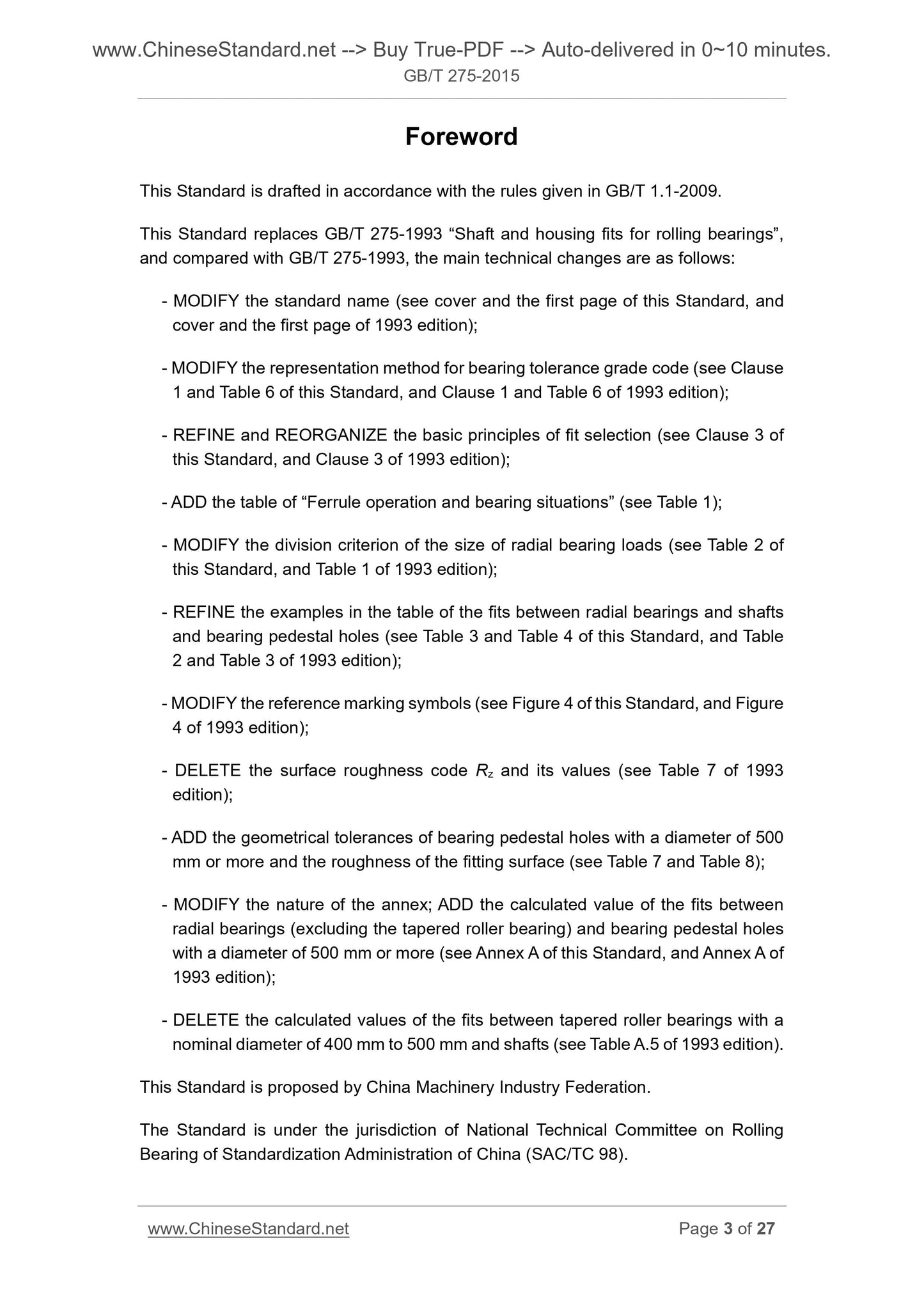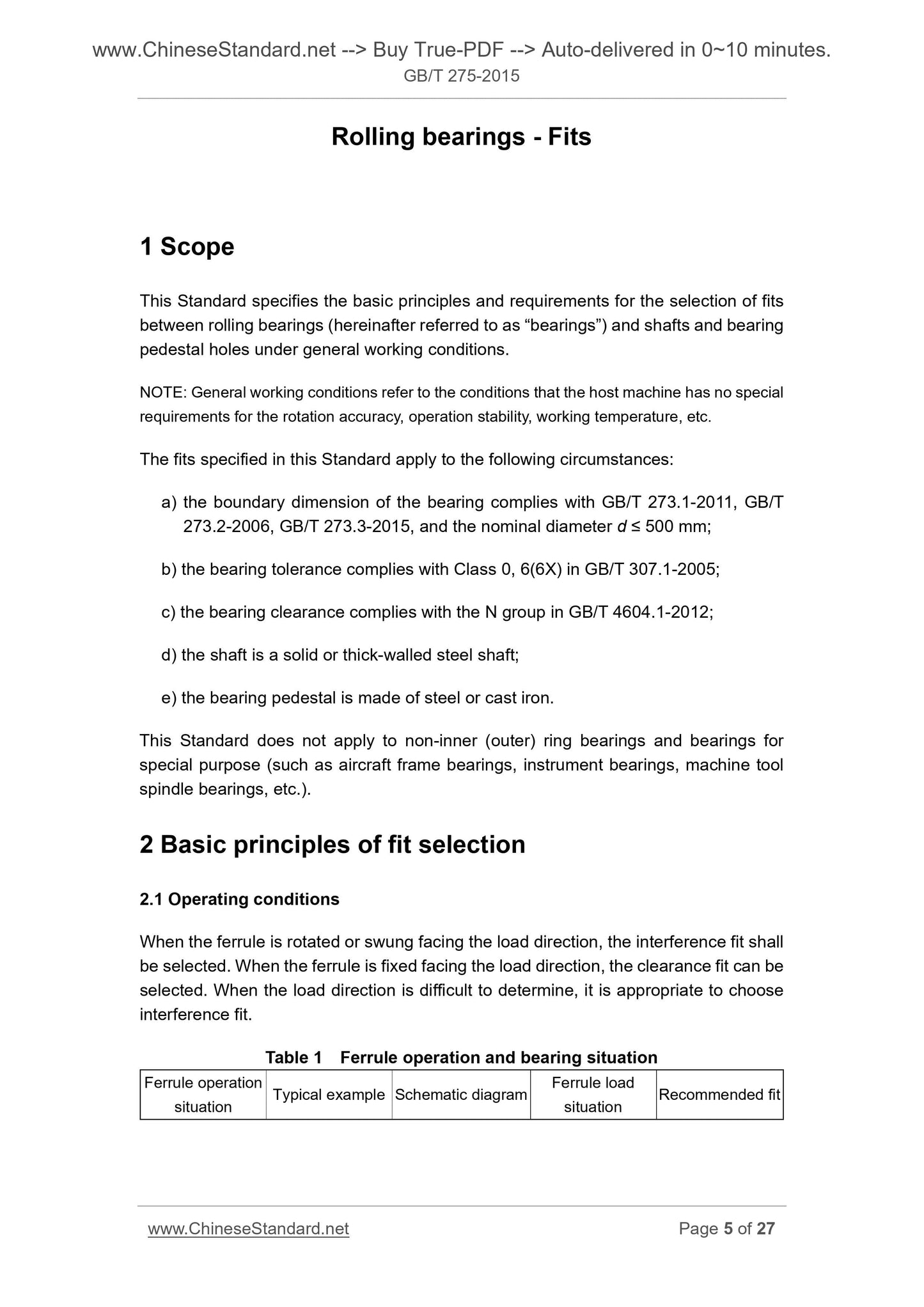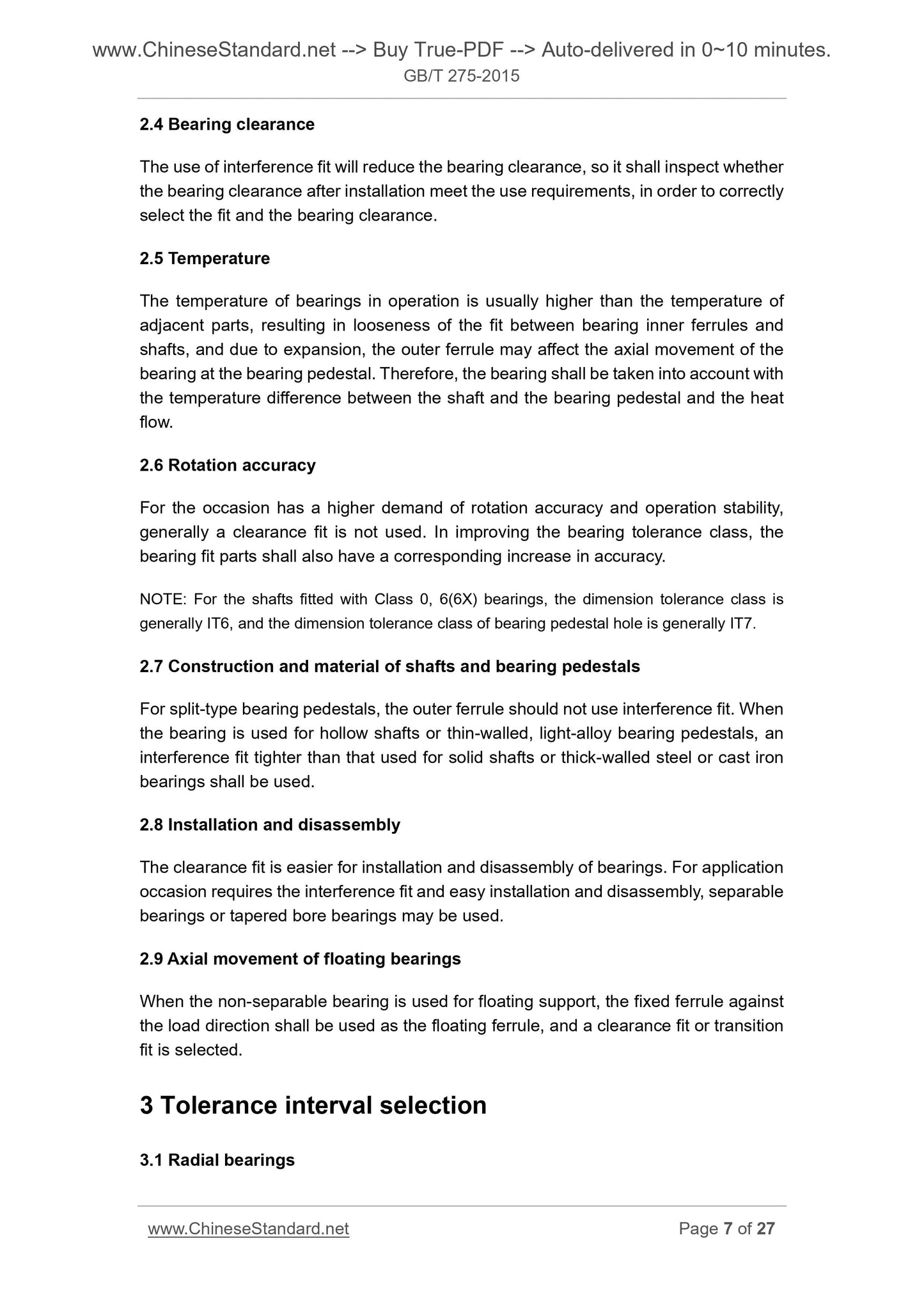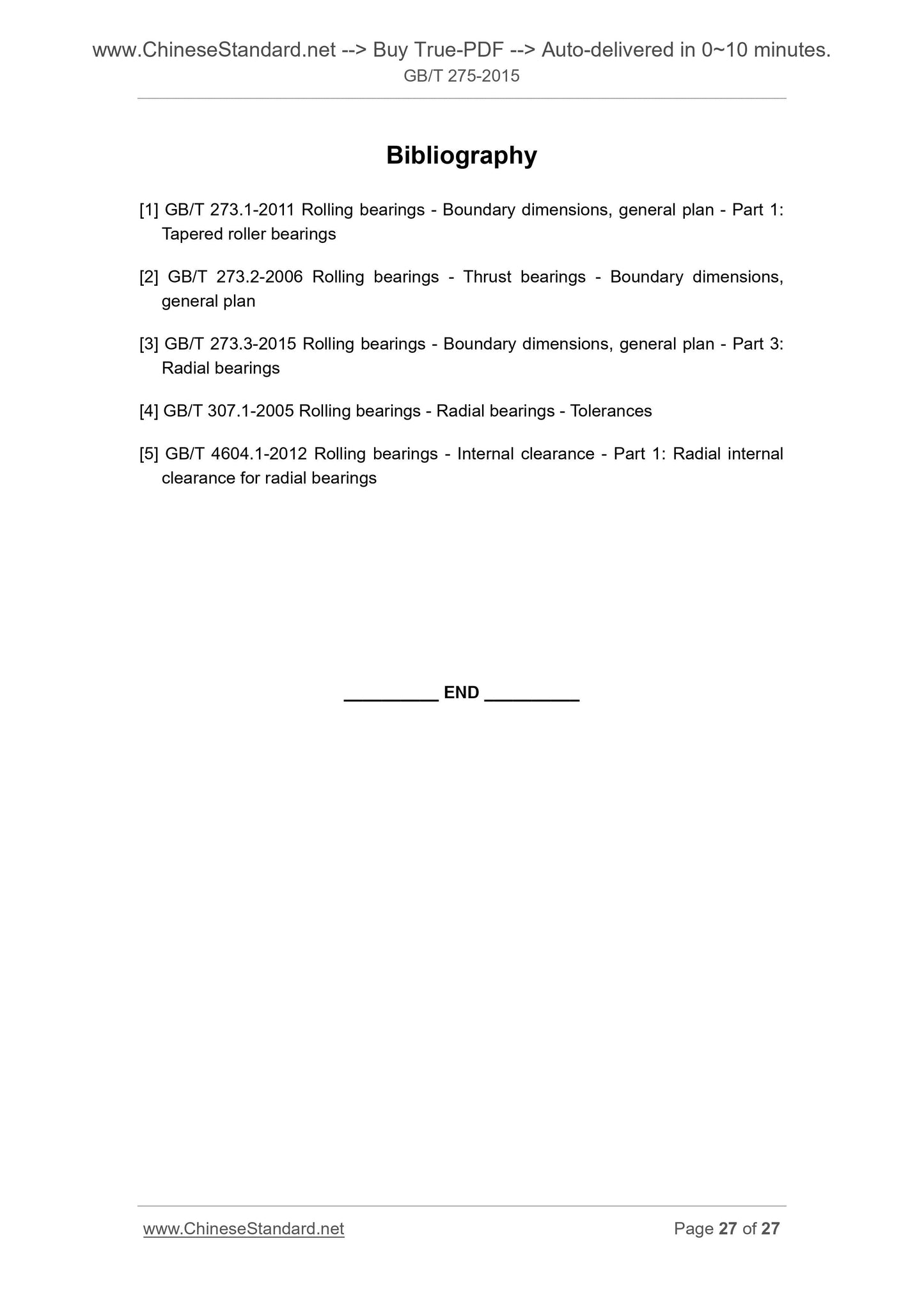1
/
of
6
www.ChineseStandard.us -- Field Test Asia Pte. Ltd.
GB/T 275-2015 English PDF (GB/T275-2015)
GB/T 275-2015 English PDF (GB/T275-2015)
Regular price
$125.00
Regular price
Sale price
$125.00
Unit price
/
per
Shipping calculated at checkout.
Couldn't load pickup availability
GB/T 275-2015: Rolling bearings - Fits
Delivery: 9 seconds. Download (and Email) true-PDF + Invoice.Get Quotation: Click GB/T 275-2015 (Self-service in 1-minute)
Newer / historical versions: GB/T 275-2015
Preview True-PDF
Scope
This Standard specifies the basic principles and requirements for the selection of fitsbetween rolling bearings (hereinafter referred to as “bearings”) and shafts and bearing
pedestal holes under general working conditions.
NOTE. General working conditions refer to the conditions that the host machine has no special
requirements for the rotation accuracy, operation stability, working temperature, etc.
The fits specified in this Standard apply to the following circumstances.
a) the boundary dimension of the bearing complies with GB/T 273.1-2011, GB/T
273.2-2006, GB/T 273.3-2015, and the nominal diameter d ≤ 500 mm;
b) the bearing tolerance complies with Class 0, 6(6X) in GB/T 307.1-2005;
c) the bearing clearance complies with the N group in GB/T 4604.1-2012;
d) the shaft is a solid or thick-walled steel shaft;
e) the bearing pedestal is made of steel or cast iron.
This Standard does not apply to non-inner (outer) ring bearings and bearings for
special purpose (such as aircraft frame bearings, instrument bearings, machine tool
spindle bearings, etc.).
Basic Data
| Standard ID | GB/T 275-2015 (GB/T275-2015) |
| Description (Translated English) | Rolling bearings - Fits |
| Sector / Industry | National Standard (Recommended) |
| Classification of Chinese Standard | J11 |
| Classification of International Standard | 21.100.20 |
| Word Count Estimation | 18,195 |
| Date of Issue | 2015-02-04 |
| Date of Implementation | 2015-10-01 |
| Older Standard (superseded by this standard) | GB/T 275-1993 |
| Regulation (derived from) | National Standards Bulletin 2015 No. 3 |
| Issuing agency(ies) | General Administration of Quality Supervision, Inspection and Quarantine of the People's Republic of China, Standardization Administration of the People's Republic of China |
| Summary | This Standard specifies the basic principles and requirements of rolling bearings and shaft and the bearing hole with the choice of the general working conditions. With this standard applies to the following conditions: a) bearing dimensions conform GB/T 273.1-2011, GB/T 273.2-2006, GB/T 273.3-2015, and a nominal inside diameter of d��500 mm; bearing tolerances in line with GB/T The 307.1-2005 0, 6 (6X) level; c) the bearing clearance conform GB/T 4604.1-2012 N group in; d) axis is solid or thick-walled steel shaft; e) bearing steel or iron castings. This Standard does not apply to non-inner (outer) ring bearing and special purpose bearing (such as airframe bearings, instrument bearings, machine tool spindle bearings, etc.). |
Share
